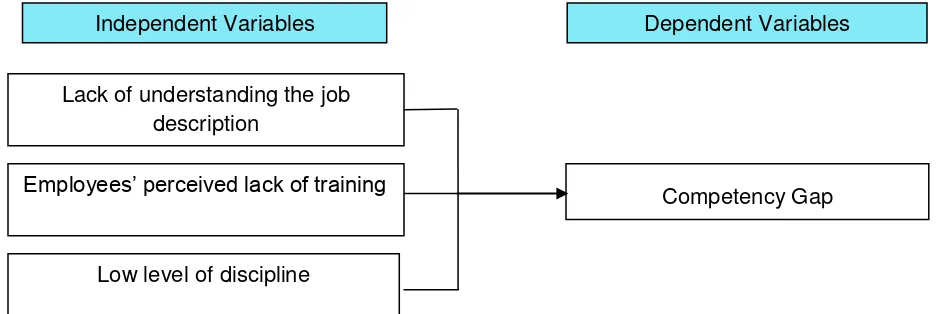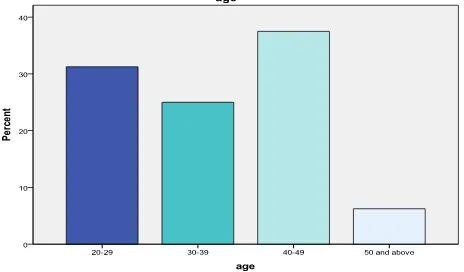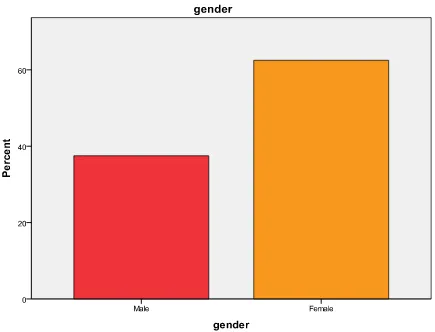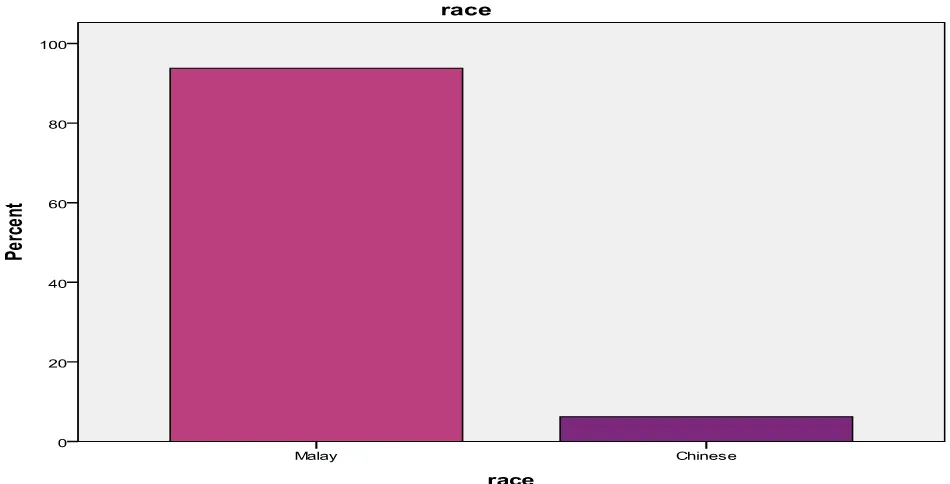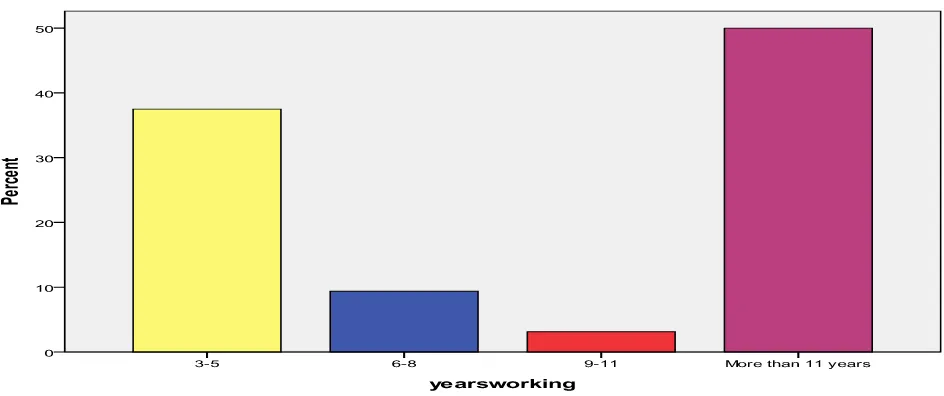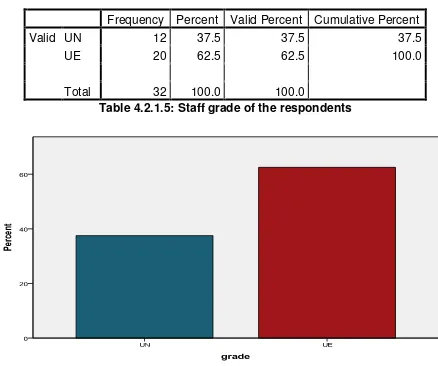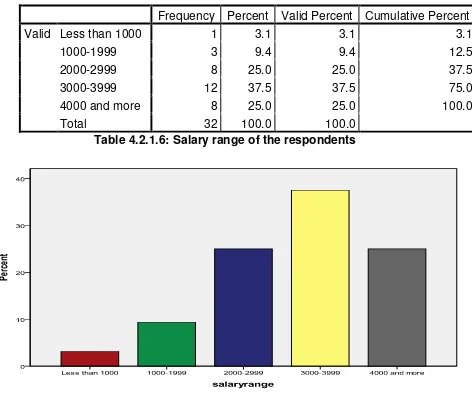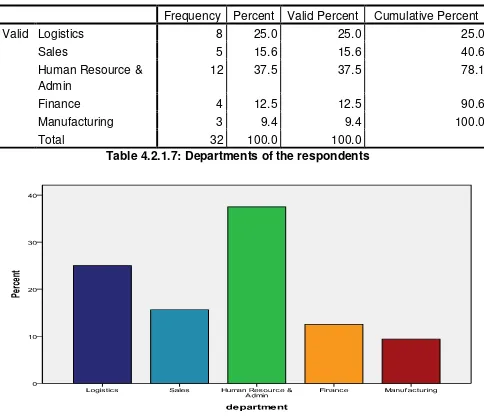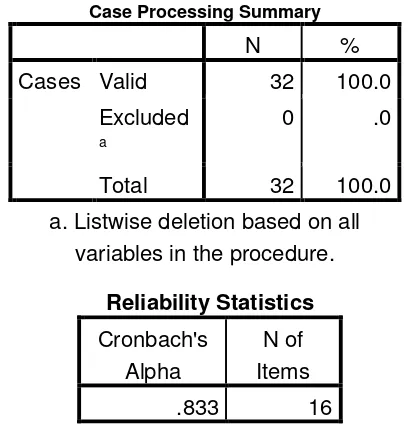1 Chapter 1:
1.0 INTRODUCTION
1.1 OVERVIEW OF COMPETENCY GAP
This research paper aimed to identify the factors contributing to competencies gap that exist among employees in Cement Industries of Malaysia Bhd (CIMA Bhd) can affect the performance of employees generally and how this problem will lead to the declining of performance of the company.
Competencies gap consists of different broad of problem that will lead to the difference between expected level of performance by company and the current level of employees‟ competencies. According to Sikora (2011) can be defined as the difference between the desirable (in manager‟s opinion) competences and the actual ones, and between the structures
and level of competences owned by the managerial and the desirable or required competences.
2 The researcher hopes to know more in detail about the factor contributing to competencies gap. In the end of this research, the researcher will provide suggestion to improve the problem related to the competencies gap in CIMA Bhd. Competency, according to Ferman(1996) as cited by Spencer and Spencer (1993), is the combination of underlying attributes, skills, traits, knowledge and motives of a person which have been causally related to superior performance in a job. According to Ferman (1996) also, as cited by Lucia and Lepsinger (1995), competency can be defined as a cluster of related knowledge and attitudes that affects a major part of one‟s job (a role or responsibility), that correlates with performance on the job that can be measured against well-accepted standards and that can be improved via training and devcelopment.
As we all know, in every business organization in this world, human capital contributes the most beneficial source to the development and success. Utilizing the human capital in the right way can give the organization chance to develop using better human resource management. Human resource management can be defined as integrated policies, systems, and management practices to recruit, maintain, and develop employees to strengthen the capacity of an organization in meeting the desired goals (MSH, 2009 as quoted by Alemu, Yosef, Beyyen and Lemma, 2011). The human resource management consists of various components that will help organization to identify and hire the most potential talent to work at the organization.
3 to the performance of an activity within a specific business context. So, in this case, competency gap is the difference that exists between the current competency level of the employees and the required competency level by the employers.
4 1.1.1 BACKGROUND OF STUDY CEMENT INDUSTRIES OF MALAYSIA BERHAD
Cement Industries of Malaysia Berhad (CIMA Bhd) is a cement company established since 1975. Since that CIMA Bhd has become as one of the leading company in manufacturing and distributing cement in Malaysia. CIMA Bhd holds 18% of the country‟s cement market share.
In CIMA Bhd, there are several divisions that consist of various manufacturing division which are in Quarrying and Ready-mixed division, Cimaco Quarry Sdn Bhd holds the required limestones for Manufacturing division, while Unipati Concrete Sdn Bhd and I-Mix Concrete Sdn Bhd manufacture the ready-mixed concrete for sale in Peninsular Malaysia.
In the meantime, for Trading Division of the group, there is Pemasaran Simen Negara responsible to coordinate customer-oriented services such as marketing, selling and distribution of the Group‟s cements with notable brands such as Blue Lion Composite Cement, NS
5 1.2 PROBLEM STATEMENT
In the researcher mind, there is one big issue arise that spark the idea of conducting the research on competency gap in the organization. The major issue in Cement Industries of Malaysia Bhd (CIMA Bhd) is how competency gap can affect the performance of employees in CIMA Bhd and how it can influence the performance of the organization.
Performance of employees plays a big role in affecting the performance of the organization. In order to build up a good rapport with other organizations also, highly manner of performance by employees is important. By fulfilling core competencies of jobs, employees can fulfill and achieve the organization goals.
6 1.3 RESEARCH QUESTION
Several questions are being identified as the main questions in this research.
a) What are factors that contribute to the competencies gap among employees in CIMA Bhd?
b) Is there any relationship between employees‟ understanding on job description and competencies gap?
c) How employees‟ perceived lack of training towards job task can be related to the level of competencies gap?
d) Is there is any relationship between low level of discipline and competencies gap.
1.4 RESEARCH OBJECTIVE
In this research, there is one objective that drives the researcher to plan and conduct the research. This objective is being identified after observation on the issue and problem that arise in the organization. The objective is:
7 1.5 THEORETICAL FRAMEWORK
There are several factors that might contribute to this problem which are poor understanding the job description, lack of understanding the training and development program and lack of discipline among the employees. Perhaps, there are also other factors that slightly contribute to broad gap of competencies between employees in CIMA Bhd such as stress and under performance.
In this matter, one of the major components that can be used is performance management system. Performance management system is typically based on personal competencies that distinguish high from average performance for successful employees or managers (Suzana, 2010). Thus, for those that recorded below what this performance management system had expect, is consider under performance, and this will lead to the broaden of competency gaps.
Figure 1.1: Factors contribute to the competency gap
Independent Variables Dependent Variables
Lack of understanding the job description
Employees‟ perceived lack of training
Low level of discipline
8 1.5 HYPOTHESIS
There are three (3) hypotheses that we can build based on the literature and the model and were tested in perspective of the previous studies and literature. The literature and various studies concluded that competency gaps exists in CIMA Bhd because of three main reasons which are lack of understand the job description, lack of satisfaction towards training program and low level of discipline between employees. The hypotheses of this study as below:
1.6.1 HYPOTHESIS 1
Ho There is no significant relationship between lack of understanding the job description and competency gap.
H1 There has significant relationship between lack of understanding the job description and competency gap.
1.6.2 HYPOTHESIS 2
Ho There has no significant relationship between lack of satisfaction towards training program and competency gap.
H2 There has significant relationship between lack of satisfaction towards training program and competency gap.
1.6.3 HYPOTHESIS 3
Ho There has no significant relationship between low level of ethics and competency gap.
9 1.7 SIGNIFICANCE OF STUDY
This study is relevant and significant for several reasons. Firstly, it can be used as a tool of reference for every company especially CIMA Bhd and generally to other companies that spent a big portion of budget to send their employees to training programs. The cost of training is very high and it is only worth the money if the desire outcome which is to increase employees‟ competencies is successfully achieved. This research will investigate ways to aid
training programsreduce the competencies gap among employees.
Secondly, the training cost is very high and not every company could afford to make such a big financial outflow for human capital investment, especially infant companies. Nonetheless, it is vital for the company to increase employees‟ competencies. Therefore, the findings of this research may help to identify several methods to improve employees‟
competency level as alternative to training program.
10 1.8 SCOPE OF STUDY
This research will investigate the contributing factors to a big competencies gap between the required level of competencies and actual competencies acquired by the employees.
First, the researcher will analyze the poor understanding of employees towards their job description that leads to the problem. Besides, it also touched on the issue of the effectiveness of the training program provided to the employees. Another potential factor of contributing to the broad gap of competencies among employees that can be identified is the low level of discipline.
11 1.9 LIMITATION OF STUDY
There are several main barriers that need to be faced by the researcher in order to conduct this research. Firstly, time constraint. Due to time limitation, the researcher need to rush on everything that needs to be done acquired to complete this research. Everything from completing the proposal to construct the questionnaire, it needed to be done wisely because the researcher also still undergoes internship program at CIMA Bhd. So, there is a limited time to do the office job at the same time, to complete this proposal and research as a whole.
Second limitation that has to face by the researcher is financial. As a student, the researcher does not have sufficient income to execute some plans in the making of the report. The costs included transportation costs, costs in collecting information data, printing costs and so on. Furthermore, the costs of paper are rising up recently.
Third limitation is the refusal of respondents to cooperate. There are several respondents that refuse to cooperate in this research as they think it might be confidential for certain data that need to be disclosed. They are also somewhat refuse to answer the questionnaires with open heart because they might think that it come down from management and whatever answer will be affecting their stability at the organization. There are also several respondents that hardly to understand the questionnaire as it had been constructed by using uncommon terms in daily life.
12 1.10 DEFINITION OF TERMS
1.10.1 COMPETENCY
According to Suzana (2010), competency can be defined as behavioral skills combined with technical knowledge and skills that will serve as indicators of success in a position. Added by Suzana (2010) also, competency contained underlying characteristics of an individual that is causally related to a criterion-referenced and/or superior performance in a job situation.
1.10.2 COMPETENCY GAP
As stressed by Sitko & Lutek (2007) which quoted by Sikora (2011), competency gap can be defined as a lack or deficiency of abilities that necessary to reach the goals and task of the organization or to achieve the results which the managerial staff regards to be attainable with the existing material and personnel resources.
1.10.3 TRAINING
13 1.10.3 CAREER DEVELOPMENT
According to Gomez-Mejia, Balkin $ Candy (2004) as quoted by Normala (2006), career development is an ongoing and formalized effort that focuses on developing enriched and more capable workers.
1.10.4 JOB DESCRIPTION
As stressed by Noe, Hollenbeck, Gerhart & Wright (2009), a job description is a list of tasks, duties and responsibilities that a particular job entails. It usually contained a job title, brief description of the job, list of the essential duties come along with job and major tasks and responsibilities.
1.10.5 DISCIPLINE
14 CHAPTER 2
2.0 LITERATURE REVIEW
The literature and various studies concluded that factors such as understanding the job description, satisfaction towards training program and ideal standard of discipline can close the gap of competency among employees. The more understanding on job description and the training program that have been conducted and also the level of discipline, the more narrow on the gap of competency among employees towards what the organization had been set as competency level. There are also somewhat positive and negative relationships on the factors that contribute to competency gap with the competency gap.
This chapter discussed the literature used by different authors and sources, which have been used to build up the knowledge of the research to find the core theories for the theoretical framework. Generally, there are several literature and sources that discussed about the factors and the problem itself which is competency gap, but it came from different sources which need to be assembled in order to construct a good literature review. Different keywords had been used such as competency, competency gaps, job description and job evaluation, performance management system, working discipline, training and development.
15 2.1 Competency Gap
Competency gap occurs when there is certain competency had been set by the organization not being fulfilled by the employees. As have been stressed by Suzana (2010), competency can be defined as behavioral skills combined with technical knowledge and skills that will serve as indicators of success in a position. Added by Suzana (2010) also, competency contained underlying characteristics of an individual that is causally related to a criterion-referenced and/or superior performance in a job situation.
Azmi, Ahmad, and Zainuddin (2010) explained that there are two types of competencies which are essential or threshold competencies and differentiating competencies. Individual can be successful in his or her job only when there is a match on both sets of competencies. Essential competencies are the knowledge, skills and abilities which are quite easy to develop through training. Meanwhile, the differentiating competencies or the underlying competencies are self concept, traits and motives which are hard to develop and therefore, they differentiate superior performance from average performance.
According to Boyatzis (1982) as quoted by Azmi, Ahmad, and Zainuddin, the concept of competency have been used in Human Resource Management to differentiate between the successful managers and the not successful one. He found that there were so many factors in determining their success such as quality, motive, experience, and behavioral traits. Thus, these competencies are much needed for organization in their employees‟ qualities in order for the
16 As we adapted from another source which from Azam et al (2009) as quoted from HRM-XL (2007), defined that competency analysis is specific, identifiable, definable and measurable knowledge, skill, ability, and/or other deployment related characteristics such as attitude, behavior, and physical ability which a human resource may possess and which is necessary for or material to, the performance of an activity within a specific business context. According to Moqvist (2002) as quoted by Azmi, competencies could be of five different types which are psychomotor, cognitive, affective, personality and social.
According to Aitchison as cited by Long, lack of certain competencies (in performing job or task) is the one of the main barriers for the ability of HR professionals to play more strategic role in an organization (Aitchison, 2007). According to Boyatzis (2008), competency can be defined as capability or ability. In general term, competency can be defined as personnel related concept referring to a set of behavioral dimensions of HR professionals‟ effective performance
at work. Some authors suggest more precise definitions that describe competencies as the work-related personal attributes (Long & Ismail, 2008): knowledge, skills, and values that individuals draw upon to do their work well (Selmer & Chiu (2004) as quoted by Long & Ismail, 2008).
According to Sikora (2011), competency gap will lead to negative effect in such it will hinders or even worse will make it impossible for organization to develop or even poses a threat to its further existence, hinders improving the company‟s competitive position and hinders
17 Another definition also stated that competency gap can be defined as the difference between the desirable (in managers‟ opinion) competences and the actual ones, between the
structure and the level of competences owned by the managerial staff and the desirable or required competences (Sikora, 2011).
18 2.2 Job Description
As cited by Gan and Kleiner (2005), job description is the essential hiring tool which describes the skills and knowledge required by the position as well as character traits and physical requirements. This gives job seeker an idea of what kind of person the position is intended for and helps the employer identify the best applicant for the position.
Gan and Kleiner (2005) also stressed that a job description can aid defining reporting relationships. It outlines the firm‟s organizational structure and the position‟s level of authority
and span of control. An effectively job description can give employees a clue as to whether the organization is bureaucratic or flexible in nature. It also helps the employees to understand who she/he must report to, who must report to them and what responsibilities the employees have jurisdiction over.
According to Michalska (2002), a precise description of job and the succeeding implementation of job positions, linked to the strategic goals of a firm, make the firm structure clear and, consequently, efficient. To sum up the definition, any job description that well-describe the job, task and responsibilities, will be well-understandable by the employees.
19 Zainuddin (2011), an individual can be successful in his or her job only when there is match on both sets of competencies.
In several cases, managers are overloaded with responsibilities and do not have time to spend analyzing every nuance of a situation. Moreover, people in the organization usually differ in their needs, personalities and attitudes towards their work and management. Therefore, managers must frequently deal with many problems simultaneously and must rely on their experience gained throughout their careers to do the job to the best of their abilities (Plessis, Beaver, and Nel, 2006).
In many cases employees perform below standard because they do not receive timely and accurate feedback on their performance. An important first step in improving performance is clearly identifying job expectations. The development of work plans for individual employees, along with measurable standards of expected performance and reporting mechanisms can help significantly in clarifying expectations (Alexander, 2000).
As for the problem, that is why organization need job description. According to Noe, Hollenbeck, Gerhart and Wright (2009), job description is a list of the tasks, duties, and responsibilities that a job entails. Job description usually consists of four components which are the title of the job, a brief description, the essential duties with detailed specifications and the task and responsibilities when carry out the job.
This job description may change depends on the organization but the format still the same and it will helps organization make consistent decisions about such matters as pay and
20 2.3 Training
One of the methods to increase motivation and perhaps skills for employees is training. According to CIPD (2005) as quoted by Chowdhury (2006), training is an instructor-led, content-based intervention, leading to desired changes in behavior. Training is usually associated with the performance of people in their job. Performance gaps that exist imply that there is a shortfall somewhere in their knowledge and/or skills to undertake certain roles or tasks (Anitha & Thenmozhi, 2011).
According to Brum (2007), training is of growing importance to companies seeking to gain an advantage among competitors. There is significant debate among professionals and scholars as to the affect that training has on both employee and organizational goals. Training can have a considerable influence on company finances as there are several potential training costs that companies may incur.
He also added as cited from Colarelli & Montei, (1996) and Becker (1993), one school of thought argues that training leads to an increase in turnover while the other states that training is a tool to that can lead to higher levels of employee retention. Brum (2007) also stressed that along these lines, once a training program is completed, employees‟ productivity is expected to increase.
The benefits will be to the company, due to an increase in worker output and productivity, and to the worker, as the increase in output should translate into higher wages and opportunities for career advancement.
21 According to Landale (1999) as quoted by Ahmad and Din (2009), in human resource management, training and development is intended to enhance the performance of employees through a learning process that involves the acquirement of knowledge, improvements of skills, concepts, rules, or changing of attitudes and behaviors in organizational settings. Training improves the knowledge, skills and attitude of the workforce and their services (Marquardt, 1996 as quoted by Ahmad and Din, 2009).
Ahmad and Din (2009) also added as cited from Yadapadithaya (2001), training prepares employees for the new job while development is essential for future assignments. Global competition has made training and development a viable tool for all kinds of organizations. Training is indispensable for the success and productivity of national governments all over the world and they spend huge amounts on training and development. It leads to successful performance, institutions and nations (Becker, 1980 as cited by Ahmad and Din, 2009).
According to Madsen and Laursen (1998) as quoted by Anitha and Thenmozhi (2011), arguably organizations would much prefer other methods such as performance appraisal, informal feedback from line managers, and individual employees rather than fulfill their training needs for superior performance. This factor contributes to the lack of training and development among employees, which eventually broaden the gap of competency in the organization.
22 It showed training and development is important to develop skills and knowledge of the employees. However, according to PSDM (2004) as quoted by Azmi (2010), in order to close the competency gap, the responsibility not only behold on the shoulder of employers alone, somehow rather it must be on the individual employees‟ initiative to prioritize the training and
development needs which would produce the greatest impact on performance (Azmi, 2010).
In order to bridging the competency gap, training that have been used must be fairly effective. Training effectiveness, as examined by Fardaniah and Ahmad (2011) which cited from Goldstein (1986) is refers to the systematic acquisition of skills, rules, concepts or attitudes that results in improve performance. Fardaniah and Ahmad also added as cited from Noe (2009), training effectiveness also defined as the benefits that company and trainees receive from training.
According to Haslinda and Mahyudin (2009), there are three factors that influence the effectiveness of training, which may can directly or indirectly affect the competency gap. Firstly, as defined by Haywood (1992), is the human resource policy on training and development program. He mentioned that too many training program place emphasis on ease and the very purpose behind the design of program namely, learning, skill development and behavioral change, has defeat the original goals and purpose of training are lost and mean all too readily become the end.
Haslinda and Ahmad added also as cited from Bumpass (1990), the trainer‟s capabilities
23 making sure that employees take an active part in the delivery of training and in the planning or training objectives; and by maintaining a financial commitment to training.
According to Low (1998) as cited by Haslinda (2009), the fundamental issues regarding human resources‟ lack of capabilities and intellectual abilities are said to be grounded in their
levels of education and technical training (Low, 1998). It has been reported that organizations are faced with a challenge in acquiring high caliber human resources with adequate levels of education according to O‟Connell (1999) and Streumer et al, (1999) as cited by Haslinda (2009). For instance, according Silver (1991) as referred from Haslinda (2009) reported that studies have shown that employees in British firms are seen to have low levels of educational and training qualifications compared to their competitor nations.
24 2.4 Discipline
When we talk about discipline, we straightly relate it to the attitude and behavior at the workplace. Generally speaking, discipline is related to the way we act at one situation or in this case, at the workplace.
According to Breacher and Trowler (2001) as quoted by Krishnan (2009), discipline is not a straightforward one. The disciplines are so different from each other that it is hard to come up with a concise definition that would fit all of them to the same degree. It can be many things at the same time and it is worthwhile to look closely at the various meanings of the word.
Discipline refers to the actions imposed by an organization on its employees for failure to follow the organization's rules, standards, or policies. Traditional approaches to discipline, based on punishment, are known to promote adversarial relationships between leaders and followers (http://www.enotes.com).
Krishnan (2009) cited according to Balkin (2001), the word discipline is derived from the Latin word discipulus which means pupil, and disciplina which means teaching. As for definition in dictionary, it will give a whole range of quite different meanings of the term from training to submission to an authority to the control and self-control of behavior (Oxford English Dictionary, 2009). As a result, there is an important moral dimension to „discipline‟ that defines on how people should behave or think.
25 responsibility for solving problem solely with the employee and not jointly with the employee; the union and the management and lastly, they do not recognize different situations and different people require different approaches.
Alexander (2000) added, there are four distinctive types of performance and disciplinary problems faced by management;
Type 1: Situations where the employee‟s quality and/or quantity of work is unsatisfactory
Type 2: Situations where personal problems that is off the job, are influencing the employee‟s work performance (e.g. alcoholism, drug abuse, financial or family
problems).
Type 3: Situations where there has been a deliberate violation of the law or established company rules or regulations, e.g. through theft, fighting, falsification of records, conflict of interest, harassment or safety infractions.
Type 4: Situations where there have been repeated minor violations of company rules, regulations, or performance problems that have not responded to non-disciplinary corrective action, e.g. minor safety infractions, incidental and subordination, uncorrected tardiness or continued poor quality workmanship.
As stated also from enotes.com as adapted from Encyclopedia of Business and Finance, there are some examples of discipline problem committed by employees such as absenteeism, abusing customers, abusive language towards supervisor, causing unsafe working conditions,
26 According to Champagne and McAfee (1993) as quoted by Guffey and Helms (2001), discipline have three distinct meanings which are; the punishment for a violation of work rule or direct order, training that molds and strengthen the employee‟s behavior and control gained by
enforce obedience.
2.5 Theory X and Theory Y
As quoted by Russ (2011), he mentioned that McGregor (1960) introduced two theories that generically called as Theory X and Y due his distaste for descriptive labels. Russ added that drawing on the work of Maslow‟s (1970) hierarchy of needs, these theories offer two particular views of work, management, and organizational life. McGregor‟s frameworks are grounded in the premise that the ways managers motivate employees are largely dependent upon beliefs about human nature. See McGregor (1960) for an exhaustive review of the range of possible implications and beliefs resulting from each set of theory X/Y assumptions.
28
CHAPTER 3
3.0 RESEARCH METHODOLOGY
3.1 INTRODUCTION
In this chapter, it explains the method and tools that will be used in this research. It provides details of the research design, which is necessary to gain better insight of the underlying methodological theories. Research design focuses on the end product such as the kind of study that is planned and the kinds of results expected. It directs the researcher to the kind of evidence that is required to address the research question adequately. The research methodology focuses on the research process and the kinds of tools that will be used for the research. In other words, it focuses on individual steps in the research process and the most suitable procedures that were employed. These two research methods were utilized by the researcher to obtain necessary information from executives and non-executives in CIMA Bhd that will be used for this research.
29 3.2 RESEARCH DESIGN
According to Shields and Twycross (2003) as quoted by Moayedi (2009), research can be classified into two types of methods: quantitative and qualitative. Quantitative research is used for descriptive historical research, and correlation research (Salkind, 2003 as quoted by Moayedi, 2009).
The researcher use quantitative research methods as this would be most suitable for this study, which to examine the factors contribute to the competency gap in CIMA Bhd. Furthermore, this would help to gain a better understanding of the research problems that have been identified. The research method is discussed in detail in the following sub-sections.
3.3 DATA COLLECTION METHOD
In this research, the researcher‟s data of information mainly come from 2 sources of information which consist of primary data and secondary data. The primary data method includes interviewing and distributing the research questionnaire. Meanwhile, the usage of secondary data come up from internet sources, article and online journals for better understanding in the researcher‟s topic from time to time. The techniques that have been used
30 3.3.1 PRIMARY DATA
a) QUESTIONNAIRES
Before handing out the questionnaire, the researcher already asked permission from the HR Manager at CIMA Bhd, Puan Surayah Abu Mansor verbally. She agreed to compromise in order to help the researcher to collect data form CIMA Bhd. Questionnaires will be handed out head to head in their department. Since CIMA Bhd has no specific department for each employee, it will be randomly given during tea break, lunch, or put on their table. The designed questionnaire was divided into two sections, namely the demographic information section (A); and the content-based questions section (B). The questionnaire is design so that employees are able to complete it within ten minutes.
(i) Section A: DEMOGRAPHIC INFORMATION
This section comprises of 7 variables such as gender, age, years of service, staff grades, marital status, department and income per month.
(ii) Section B: JOB DESCRIPTION
31 (iii) SECTION C: TRAINING
This section is focused on the question that regards to the employees‟ preceived
towards their training through the working services at CIMA Bhd. This section included 10 questions.
(iv) SECTION D: DISCIPLINE
This section included 15 questions that focused on the matters of discipline acted by the respondents during at their workplace.
(v) SECTION E: COMPETENCY
In this section, there are 16 questions that regards on the matter of employees‟
competencies towards their job at CIMA Bhd.
(b) OBSERVATION
The researcher has applied the observation method in order to assist in the study at CIMA Bhd among the employees.
(c) DIRECT INTERVIEWS
32 3.3.2 SECONDARY DATA
Secondary data includes information made available by business and government sources, a published material and computerized data. These data were collected and easily at a relatively low cost in a short time. Therefore, both the internal and external secondary data would be used to provide the direction for the primary research. This kind of data divided into two which is:
a) EXTERNAL DATA
External data were gathered from other sources outside Bank Islam such as published data from local newspaper (The Star, Berita Harian, annual report,books, journals and most importantly is through their website). Meanwhile, external data were also collected from reference unpublished project papers and previous research project.
3.4 POPULATION
33 3.5 SAMPLING METHOD
The survey research, which they claim is the best method available to social scientists interested in collecting original data to describe a population that is too large to observe directly. The population in this study compiled non-executive (UN) and executive (UE) in CIMA Bhd that have worked with the organization for at least one (1) year. For the purpose of this study, a total of about 100 non-executive and executive staffs are survey.
The study sample contained of one hundred (100) respondents from the two different grades which are UN and UE chosen in the CIMA Bhd to participate in the survey. There was a sampling method involved in this research, which is disproportionate stratified random sampling method. Through this sampling method, the data were collected on different information regarding different strata within the population which are differs in their parameters.
34 3.6 DATA ANALYSIS AND INTERPRETATION TECHNIQUES
In this research, data processing will be taking place in series of process starting with coding all the raw data from questionnaire, data entry in SPSS, data editing to make some checking and adjustment, data analysis, and finally data interpretation for findings and recommendation.
For data analysis, the researcher used the descriptive analysis for the data arrangement and analysis to interpret the data to the meaningful information based on the question that being address to the respondents. The data arrangement had been done properly and obtained important information regarding the research topic and to make the correct conclusion about the current situation by the public.
There are a few techniques that can be used to analyze the data. It consists of:
3.6.1 FREQUENCY DISTRIBUTION
35 3.6.2 RELIABILITY TEST
Reliability is the degree to which measures are free from error and therefore yield consistent results. It is most understood that the popular test of reliability is the Cronbach‟s coefficients alpha which is used generally for multipoint scaled items. In this study, the higher the coefficients, the better the measuring instruments.
3.6.3 SIGNIFICANCE TEST
This test is to measure either the research that being made is important or significant to the field of the study, public, researcher and others. If the amount achieve it target that means the research is valuable to do so.
3.6.4 PEARSON CORRELATION
36 CHAPTER 4
4.0 FINDINGS AND ANALYSIS
4.1 INTRODUCTION
After all the data been collected into SPSS 18, the results been analyzed to measure the dependent and independent variables for this study. Basically this measurement were taken to identify the relationship between understanding the job description, employees‟ perceived towards training and lack of discipline among employees at CIMA Bhd which leads to the competency gap among the employees.
4.2 FREQUENCY DISTRIBUTION
4.2.1 DEMOGRAPHIC PROFILE OF RESPONDENTS
Table 4.2.1.1: Age of the respondents
Frequency
Percent
Valid Percent
Cumulative Percent
Valid 20-29
10
31.3
31.3
31.3
30-39
8
25.0
25.0
56.3
40-49
12
37.5
37.5
93.8
50 and
above
2
6.3
6.3
100.0
37 Figure 4.2.1.1: Age of the respondents
38
Frequency Percent Valid Percent Cumulative Percent
Valid Male
12
37.5
37.5
37.5
Female
20
62.5
62.5
100.0
Total
32
100.0
100.0
Table 4.2.1.2: Gender of the respondents
Figure 4.2.1.2: Gender of the respondents
39 Frequency Percent Valid Percent Cumulative Percent
Valid Malay 30 93.8 93.8 93.8
Chinese 2 6.3 6.3 100.0
Total 32 100.0 100.0
Table 4.2.1.3: Race of the respondents
Figure 4.2.1.3: Race of the respondents
40
Frequency Percent Valid Percent
Cumulative
Percent
Valid 3-5
12
37.5
37.5
37.5
6-8
3
9.4
9.4
46.9
9-11
1
3.1
3.1
50.0
More than 11 years
16
50.0
50.0
100.0
Total
32
100.0
100.0
Table 4.2.1.4: Years of services of the respondents
Figure 4.2.1.4: Years of services of the respondents
41
Frequency Percent Valid Percent Cumulative Percent
Valid UN
12
37.5
37.5
37.5
UE
20
62.5
62.5
100.0
Total
32
100.0
100.0
Table 4.2.1.5: Staff grade of the respondents
Figure 4.2.1.5: Staff grade of the respondents
42
Frequency Percent Valid Percent Cumulative Percent
Valid Less than 1000
1
3.1
3.1
3.1
1000-1999
3
9.4
9.4
12.5
2000-2999
8
25.0
25.0
37.5
3000-3999
12
37.5
37.5
75.0
4000 and more
8
25.0
25.0
100.0
Total
32
100.0
100.0
Table 4.2.1.6: Salary range of the respondents
Figure 4.2.1.6: Salary range of the respondents
43
Frequency Percent Valid Percent
Cumulative Percent
Valid Logistics
8
25.0
25.0
25.0
Sales
5
15.6
15.6
40.6
Human Resource &
Admin
12
37.5
37.5
78.1
Finance
4
12.5
12.5
90.6
Manufacturing
3
9.4
9.4
100.0
Total
32
100.0
100.0
Table 4.2.1.7: Departments of the respondents
Figure 4.2.1.7: Departments of the respondents
44 4.3 RELIABILITY TEST
The reliability of a measure is established by testing for both consistency and stability. According to Sekaran, (2003) reliability that less than 0.60 are considered to be poor, those in the range of 0.70 are acceptable, and those over 0.80 are considered as good and acceptable.
4.3.1 Reliability statistics for dependent variable (DV) and all the independent variables.
Table 4.3.1.1: Reliability statistics for understanding of the job description, employees’
perceived towards training and level of discipline among employees towards level of competency gap at CIMA Bhd.
The table 4.3.1.1 above shows that the Cronbach‟s Alpha coefficient for the dependent variables and all the independent variables listed is 0.833. This number indicated that the research conducted for this dependent variable and all the independent variable is well understood by the respondents.
Case Processing Summary
N %
Cases Valid 32 100.0
Excluded a
0 .0
Total 32 100.0
a. Listwise deletion based on all variables in the procedure.
Reliability Statistics Cronbach's
Alpha
N of Items
45 4.3.2 Reliability statistics for job description
Table 4.3.2.1: Reliability statistics for job description
The table 4.3.2.1 shows that the Cronbach‟s Alpha coefficient for job description is 0.765. Generally, the higher the coefficient, the better the measuring instrument. This implies that the research conducted regarding job description is easily understood by the respondents. Therefore, the instrument used to measure concept in this research can be considered as acceptable and reliable.
Case Processing Summary
N %
Cases Valid 32 100.0
Excludeda 0 .0
Total 32 100.0
a. Listwise deletion based on all variables in the procedure.
Reliability Statistics Cronbach's
Alpha
N of Items
46 Table 4.3.3.1: Reliability statistics for employees’ perceive of training program
Table 4.3.3.1: Reliability statistics for employees’ perceived about training program
The table 4.3.3.1 shows that the Cronbach‟s Alpha coefficient for employees‟ perceived towards training program at CIMA Bhd. In general, the higher the coefficient the better the measuring instrument. This implies that the research conducted regarding this independent variable is highly understood by the respondents. Therefore, the instrument used to measure concept in this research is acceptable and reliable.
Case Processing Summary
N %
Cases Valid 32 100.0
Excludeda 0 .0
Total 32 100.0
a. Listwise deletion based on all variables in the procedure.
Reliability Statistics Cronbach's
Alpha
N of Items
47 4.3.4 Reliability statistics for level of discipline
Table 4.3.4.1: Reliability statistics for level of discipline
The table 4.3.4.1 shows that the Cronbach‟s Alpha coefficient for perception and status is 0.636. In general, the higher the coefficient, the better the measuring instrument. This implies that the researchers conducted regarding perception and status is easily understood by the respondents. Therefore, the instrument used to measure concept in this research can be considered as acceptable and reliable.
Case Processing Summary
N %
Cases Valid 32 100.0
Excluded a
0 .0
Total 32 100.0
a. Listwise deletion based on all variables in the procedure.
Reliability Statistics Cronbach's
Alpha
N of Items
48 4.4 SIGNIFICANCE TEST
Table 4.4.1: The significance test of dependent variable and independent variables
From the table 4.4.1 above, the significance test is 0.285. This number indicate that the research made by the researcher is not significance and not important to do so. Any significance test that gets below 0.005 means that the research is strongly important and significance and any test that higher is not important to do any research about it.
ANOVA
bModel Sum of
Squares df
Mean
Square F Sig.
1 Regression .504 3 .168 1.328 .285a
Residual 3.541 28 .126
49 4.5 PEARSON CORRELATION
50 4.5.1.1 Correlation between factors influencing the demand of Islamic Credit Card
by Bank Islam Shah Alam with easiness.
Hypothesis 1
Hº: There is no significant relationship between understanding the job description and competency gap.
H¹: There is a significant relationship between understanding the job description and competency gap.
Table 4.5.1.1: Correlations between competency gap with understanding of job description.
In the table 4.5.1.1 shows that the first independent variable which understands about the job description is not significant correlates with the dependent variable which is competency gap among employees at CIMA Bhd in the value of 0.407 which is more than 0.05. These two variables positively related at 0.152. So, that means this correlation failed to reject null hypotheses (H¹) and rejected alternate hypotheses (Hº).
Correlations
Competency
gap Job description Competency
gap
Pearson Correlation 1 .152
Sig. (2-tailed) .407
N 32 32
Job description Pearson Correlation .152 1
Sig. (2-tailed) .407
51 Hypothesis 2
Hº: There is no significant relationship between employees‟ perceived of training program and competency gap.
H¹: There is a significant relationship between employees‟ perceived of training program and competency gap.
Table 4.5.1.2: Correlations between competency gaps with employees’ perceived of training program
In the table 4.5.1.2 shows that the second independent variable which employees‟ perceived about the training program provided by CIMA Bhd is in the positive relationship at the value of 0.295 but not significant correlates with the dependent variable which is competency gap among employees at CIMA Bhd in the value of 0.101 which is more than 0.05. So, that means this correlation failed to reject null hypotheses (H¹) and rejected alternate hypotheses (Hº).
Correlations
Competency
gap training Competency
gap
Pearson Correlation
1 .295
Sig. (2-tailed) .101
N 32 32
training Pearson Correlation
.295 1
Sig. (2-tailed) .101
52 Hypothesis 3
Hº: There is no significant relationship between low level of discipline and competency gap.
H¹: There is a significant relationship between low level of discipline and competency gap.
Table 4.5.1.3: Correlations between competency gaps with low level of discipline
In the table 4.5.1.3 shows that the second independent variable which low level of discipline among CIMA employees is in the negative relationship at the value of -0.058 but not significant correlates with the dependent variable which is competency gap among employees at CIMA Bhd in the value of 0.753 which is more than 0.05. So, that means this correlation failed to reject null hypotheses (H¹) and rejected alternate hypotheses (Hº).
Correlations
Competency gap
Discipline at workplace Competency gap Pearson
Correlation
1 -.058
Sig. (2-tailed) .753
N 32 32
Discipline at workplace
Pearson Correlation
-.058 1
Sig. (2-tailed) .753
53 5.0 CONCLUSIONS AND RECOMMENDATIONS
This study is being conducted for the researcher to find the factors that contribute to the competency gap at CIMA Bhd. The reason of this study is to provide the factors that might contribute to the level of competency gap which may high and affecting the performance of the organization.
CIMA Bhd was chosen as a place which the researcher will make as a field of study. Employees of CIMA Bhd which came from different branches since CIMA Bhd were the respondents of this research.
The researcher collected the data through primary and secondary data. From the preliminary research, the researcher found out three independent variables which are understanding of job description, employees‟ perceived of training program and low level of
discipline among employees at CIMA Bhd.
54 As for recommendation, there is not much that can be recommended as there is no significance between the dependent and independent variables. For the organization which the researcher is sure that there is a competency gap among the employees, the organization should look further on the certain and specific side which contribute more on the gap among the employees. It needs to be more specific maybe in terms of the department that contribute broad gap among the employees in terms of the competencies. The key competencies of ones job also need to be clarified and expalined to the employees as they might not understand of their nature of job, the key and core competencies of their job and so forth. The organization also can bridging the gap of competencies by helping the employees to meet their job expectations. As for now, according to the researcher, the researcher still failed to find any lack of understanding on the job description and most of the respondents really understand about their job. For the employees‟ received about training program, so far the employees do enjoy the
training program provided.
55 BIBLIOGRAPHY
Ahmad, I. & Din, S.U. (2009). Evaluating Training and Development. Gomal Journal of Medical Science. July – December 2009. Vol 7, No. 2.
Alemu, K.T., Yosef, S.A., Beyye, S.Z., & Lemma, N.Y. (2011). An Exploration of Competency Gaps in Human Resource Management in Health Sector in Ethiopia (2011).
Alexander, M (2000). Employees Performances and Discipline Problems: A New Approach. Queen‟s University.
Anitha, N., Thenmozhi, D. (2011). Competency Assessment – A Gap Analysis. Interdisciplinary Journal of Contemporary Research in Business. Vol. 3 No.4.
Azmi, I.A.G. (2010). Competency-based human resource practices in Malaysian public sector organizations. African Journal of Business Management. Vol. 4. Issue 2 pp.235-241.
Azmi, I.A.G, Ahmad, Z.A, & Zainuddin, Y. (2009). Competency based Career Development and Performance Management Practices and Service Quality in Malaysian Public Organizations. Retrieved on 1st January 2009 from International Review of Business Research Papers. Vol 5 No. 1.
Azam, K., Saeed, G., & Ullah, S. (2009). Competency Gap Assessment of Social Organizers: The Case of NGOs in Pakistan. International Review of Research Business Papers. Vol 5 No. 5 Pp 47-49. Retrieved on 5th September 2009.
Beheshtifar, M. & Mogdaham, M.N. (2011). Studying the Competency-Related Models in Succession Planning. European Journal of Economics, Finance and Administrative Sciences. ISSN 1450-2275 Issue 34.
Boyatzis, R.E. (2008). Competencies in 21st Century. Journal of Management Development. Vol.27. Issue 1 pp. 5-12.
Brum, S. (2007). What Impact Does Training Have on Employee Commitment and Employee Turnover. University of Rhode Island.
Chowdury, M.S. (2006). Human Behavior in the Context of Training: An Overview of the Role of Practice Vol. 7 No.2.
Employee Discipline. Retrieved on May 11th 2012, from http://www.enotes.com/employee-discipline-reference/employee-discipline.
Fardaniah, S.A.A & Ahmad, S. (2011). Stimulating training motivation using the right training characteristics. Industrial and Commercial Training. Vol. 43. ISS. 1 pp 53-61.
Gan, M. & Kleiner, B.H. (2005). How to Write Job Descriptions Effectively. Management Research News. Vol. 28. ISS. 8 pp. 48-54.
56 The Effectiveness of Training in the Public Service. American Journal of Scientific Research. ISSN 1450-223X Issue 6. pp. 39-51.
HR-XML (2007). “HR-XML Measurable Competencies” available at
http://ns.hr-xml.org/2_5/HR-XML-2_5/CPO/Competencies.html#_Toc127531652 (accessed in April, 2012)
Krishnan, A. (2009). What Are Academic Disciplines. ESRC National Centre for Research Methods.
Long, C.S. (2009). Human Resource Competencies: An Empirical Study on the HR Professionals in the Manufacturing Sector in Malaysia. E-Journal of Business and Economic Issues, Volume 3 Issue 3.
Long, C.S. & Wan Ismail, W.K. (2008). Human Resource Competencies: A Study of the HR Professionals in Manufacturing Firms in Malaysia. International Management Review. Vol. 4 No.2.
Long, C.S. & Wan Ismail, W.K. (2008). Understanding the Relationship of HR Competencies & Roles of Malaysian Human Professionals. European Journal of Social Sciences. Volume 7 Number 1.
Michalska, B.B. (2002). Creating a job description for an electronic resources librarian. Library Management. Vol. 23 ISS. 8 pp. 378-383.
Moayedi, N.N. (2009). Islamic Work Ethic And Muslim Religious Beliefs Impact On Organizational Commitment In The Workplace. A Dissertation Presented in Partial Fulfillment of the Requirements for the Degree Doctor of Management in Organizational Leadership.
Normala, D., Rohaya, H. & Rahman, A.A.H. (2006). Accessing the Training Needs of Academic Staff in Faculty of Business Management, UiTM Shah Alam. 2006.
Noe, A.R., Hollenbeck, J.R., Gerhardt, B., & Wright, P.M. (2009). Fundamentals of Human Resource Management. McGraw-Hill International Edition. pp. 94-95.
Plessis, A.J., Beaver, B., & Neal, P.S. (2006). Closing the Gap between Current Capabilities and Future Requirements in HRM in New Zealand: some empirical evidence. Journal of Global Business and Technology, Vol. 2, No 1.
Russ, T.L. (2011). Theory X/Y assumptions as predictors of managers' propensity for participative decision making. Management Decision, Vol. 49. ISS: 5 pp. 823-836.
Sekaran, U. (2003). Research Methods for Business. United States of America: Hermitage Publishing Services.
Sikora, U.S. (2011). Reducing Competence Gap and the Enterprise’s Effectiveness. Unpublished doctorate dissertation, Marie Curie Skolodowska University, Poland. 2011.
